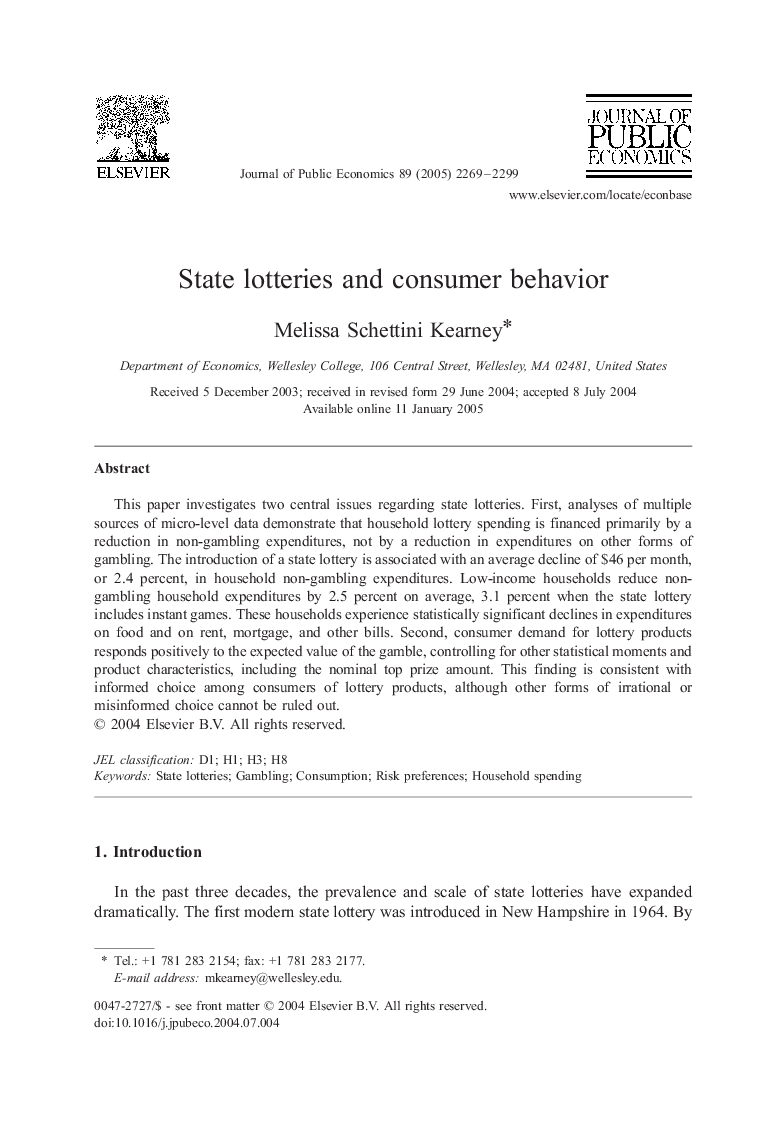| Article ID | Journal | Published Year | Pages | File Type |
|---|---|---|---|---|
| 969161 | Journal of Public Economics | 2005 | 31 Pages |
This paper investigates two central issues regarding state lotteries. First, analyses of multiple sources of micro-level data demonstrate that household lottery spending is financed primarily by a reduction in non-gambling expenditures, not by a reduction in expenditures on other forms of gambling. The introduction of a state lottery is associated with an average decline of $46 per month, or 2.4 percent, in household non-gambling expenditures. Low-income households reduce non-gambling household expenditures by 2.5 percent on average, 3.1 percent when the state lottery includes instant games. These households experience statistically significant declines in expenditures on food and on rent, mortgage, and other bills. Second, consumer demand for lottery products responds positively to the expected value of the gamble, controlling for other statistical moments and product characteristics, including the nominal top prize amount. This finding is consistent with informed choice among consumers of lottery products, although other forms of irrational or misinformed choice cannot be ruled out.
